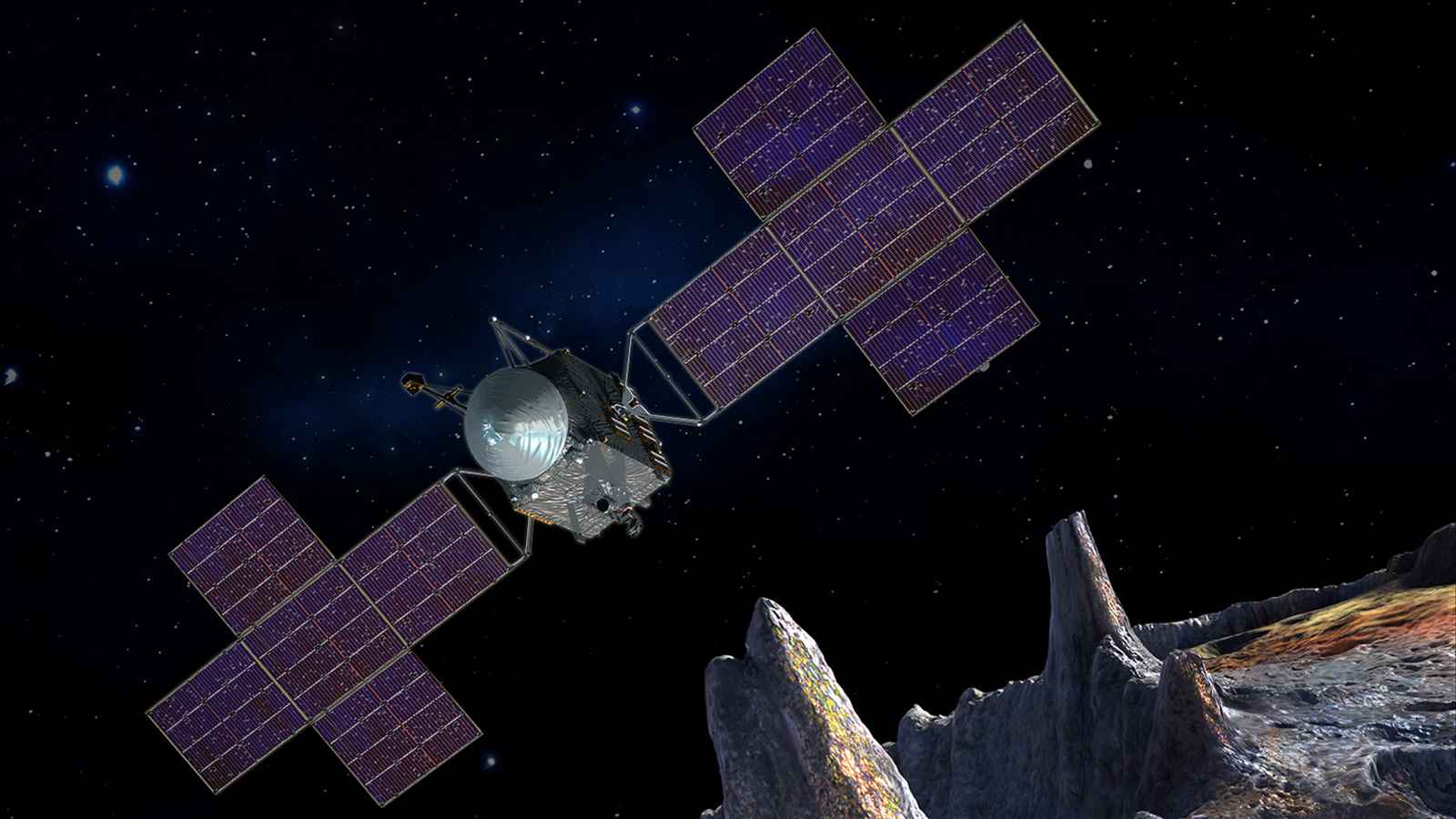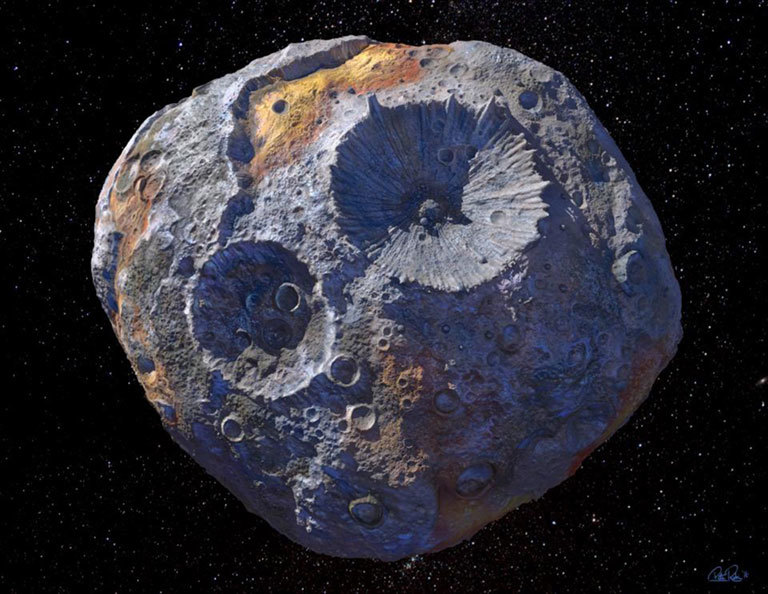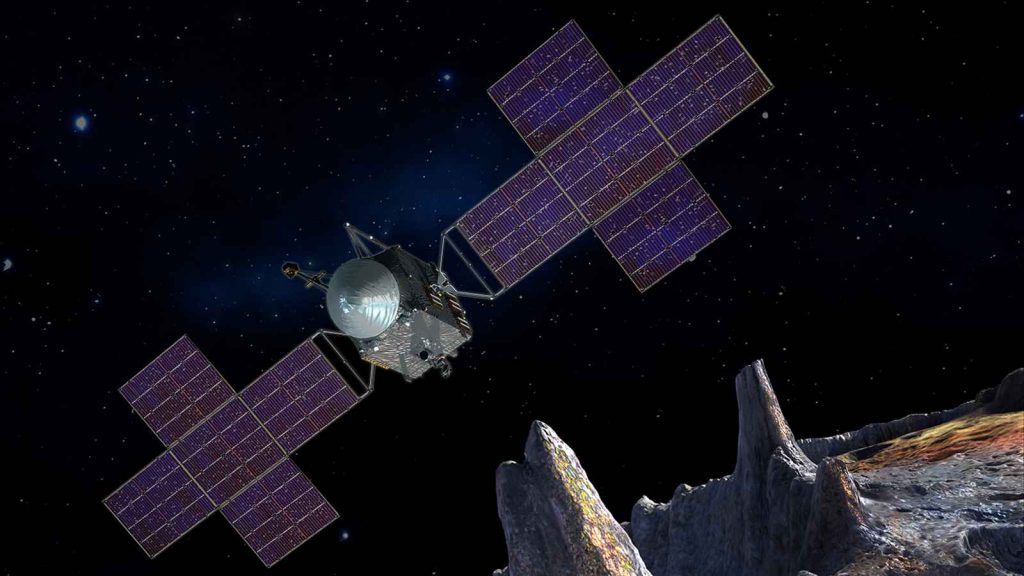There are so many asteroids in space with different compositions, characteristics, and features. Many asteroids have attracted the eye of astronomers and space scientists, while there are some asteroids with unique composition and characteristics that has compelled them to explore those.
Out of those unique asteroids, there is a metallic asteroid in space about 200 km in diameter (known as 16 Psyche). The asteroid is the exposed nickel-iron core of an early planet and is in the main asteroid belt.
In this article, we will discuss the What is the goal of the NASA’s Psyche mission, and, why the Psyche asteroid is one of the important asteroids for the study.
History of ‘16’ Psyche Asteroid
- The Psyche asteroid was first discovered on 17 March 1852 by the Italian astronomer ‘Annibale de Gasparis’
- The name Psyche was taken from the Greek Mythological figure of ‘Psyche’.
Characteristics Of ‘16’ Psyche
- It is one of the dozen most massive asteroids in the main asteroid beltIt was the 16th asteroid discovered in sequence and thus has ‘16’ as a prefix
- One of the massive asteroids in the main asteroid belt
- Contains about one percent (1%) of the total mass of the main asteroid belt
- Approx. 200 km in diameterIt is an exposed nickel-iron core of an early planet
- Being so much heavy in mass, its gravitational effects can be studied on other planets. The mass of ‘16’ Psyche is found to be (3.38±0.28)×10−11 M☉ and density is of the order of 6.98±0.58 g/cm³
- With such high density, it can be easily estimated that the asteroid is mainly made up of large metals. The concentration of Pure metals is about 95% in the ‘16’ Psyche.
What Is Nasa’s Psyche Mission?
As told earlier, ‘16’ Psyche is a metallic asteroid in the main asteroid belt and an exposed nickel-iron core of the earlier planet. The exploration of ‘16’ Psyche will help us to understand how planets were formed, and how they separated into layers (Crust, Mantle, and Core).
The mission will also answer the questions related to the early era of the solar system, and the spacecraft sent to ‘16’ Psyche will also study its topography, composition, magnetic and gravitational properties, and other important characteristics.
NASA got the proposal of Psyche mission in early 2014. The team led by ‘Lindy-Elkins Tenton’ at Arizona State University argued that ’16; Psyche being the only metallic asteroid will prove to be essential for study, and also presented a robotic Psyche orbiter. Later, NASA approved the mission on 4 January 2017.
The Psyche mission will commence from around October 2022, with gravity assist to the Psyche Spacecraft from Earth in 2023 and will reach ‘16’ Psyche asteroid in 2026 approx.
There, the Psyche spacecraft will orbit for 21 months observing ‘Psyche Asteroid’ and it will study the composition, characteristics, and features of the asteroid in a more precise and accurate manner, along with other questions and mysteries about planets and solar system to get unsolved.
Timeline Depicting History Of Psyche Mission
| YEAR | EVENT |
| 2014 | Proposal to NASA for Psyche mission |
| 2017 | NASA accepted the proposal for Psyche mission |
Important Timeline for Upcoming Psyche Mission
| Date | Event |
| 2022 | Launch of Psyche spacecraft |
| 2023 | Earth Gravity assist to the spacecraft |
| 2025 | Mars Flyby |
| 2026 | Spacecraft will reach ‘16’ Psyche asteroid |
Instruments Used By Psyche Spacecraft
The spacecraft that will be sent to Psyche will employ various instruments and electronic devices/tools, like magnetometer, Multispectral imager, Gamma-ray, and Neutron spectrometer, e.t.c
Other Objectives Of Psyche Mission
- As already discussed, Psyche mission aims to study the ‘16’ Psyche asteroid in a detailed manner and will also answer various other questions related to the formation of the planets, the early era of the solar system, and how the planets separated into different layers forming the crust, mantle, and core.
- The mission aims to answer whether Psyche is really an exposed nickel-iron core of an early planet, or it is just an unmelted material.
- It will also identify the relative ages of the regions on Psyche’s surface.
- Deep inside the rocky terrestrial planets (e.g. Earth), scientists infer the presence of metallic cores, however, the cores lie very much below the crust and mantle of the planet, and thus we cannot see or measure Earth’s core directly. ‘16’ Psyche is an alternative to study the violent history of collisions and accretion that created terrestrial planets.
Conclusion
The Psyche Mission to be launched in 2022 is going to be one of the important missions out of many other missions that are going to launch this year in space by NASA.
With so many discoveries related to space, and many missions in the past and current, we are still left with many unanswered questions. So much is to be discovered, and so much is to be revealed in the upcoming years.


